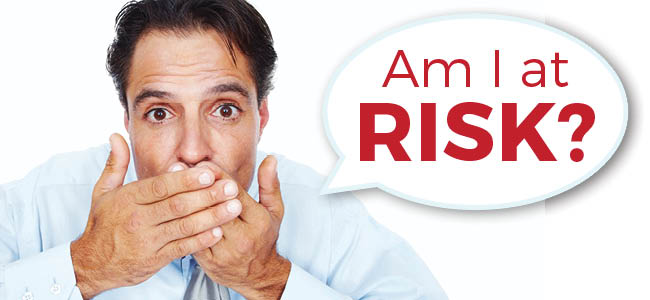Am I at Risk? The Question That’s on Everyone’s Lips

Speaking, eating, and smooching — these are all daily activities that draw attention to your lips. You most likely catch a glimpse of them every time you look in the mirror throughout the day, like when you brush your teeth during your morning routine and then again before going to bed. With their high visibility, you might guess that identifying lip cancer in its earliest stages would be common, but you might be surprised at how often early signs go unnoticed.
Skin cancer is the most common type of cancer in the U.S., and according to the American Dental Association, 41,000 Americans will be diagnosed with oral and throat cancers this year. With 60% of the U.S. population visiting the dentist each year, where there mouths are closely examined and oral cancer screenings are done routinely, the dental community is the first line of defense for early detection.
What Is the Difference Between Lip and Oral Cancer?
Lip cancer is one kind of oral cancer. Simply put, cancer is the rapid and uncontrollable growth of invasive cells that damage surrounding tissue. When this occurs on or in the mouth, it is referred to as oral cancer. A notable difference between lip cancer and cancer that occurs inside the mouth and throat is the added risk factor of prolonged exposure to the sun. Lip cancer is often caused by the harmful effects of ultraviolet light, and the lower lip specifically has the greatest risk because it has more exposure to the sun.
Risk Factors
While sun exposure increases the likelihood of suffering from lip cancer, there are other factors that increase your risk for oral cancer, most of which are avoidable.
- Tobacco: Tobacco use of any kind increases your chances of getting oral cancer.
- Alcohol: Heavy alcohol use and abuse has been found to be a risk factor.
- Sun exposure: Individuals who have regular, prolonged exposure to the sun are more likely to be diagnosed with cancer of the lips.
- HPV: HPV is tied to the development of cervical cancer and is also a risk factor for oral and oropharyngeal cancers.
- Dentures: Though the connection is debated, some believe that poorly fit dentures that cause long-term irritation of the mouth lining may lead to cancer. It is important that patients who wear dentures have the fit checked regularly, along with a regular oral cancer screening, to minimize their risk.
Signs of Oral Cancer
Cancer of the mouth reveals itself as a growth or sore in the mouth or throat that doesn’t go away with time. Other symptoms include:
- Red or white patches on the lining of the mouth or tongue
- Swelling or thickening of areas inside the mouth
- Unexplained bleeding
- Sores on the face, neck, or mouth that do not heal
- Chronic sore throat
- Hoarseness
- A change in the way your dentures fit
Though early detection is key to surviving oral cancer, prevention should always be the top priority.
Oral and Lip Cancer Prevention
There are some simple preventive steps you can take to minimize your risk of getting oral cancer:
- Good oral hygiene: Gum disease and tooth decay introduce infections into your mouth. This increases the risk of getting oral cancer. Make sure to brush, floss, and rinse daily.
- Make your routine visits: Your routine visits to the dentist are important. Our providers do more than make sure your teeth are clean; they are skilled at detecting the earliest signs of cancer, and they examine you thoroughly at every visit.
- Don’t engage in high-risk behaviors: Avoid smoking and smokeless tobacco, and minimize your consumption of alcohol.
- Use sun protection: If you are going to be spending time in the sun, use a broad-spectrum lip balm and sunscreen for your face and exposed skin. A broad-rim hat is an excellent choice for extra protection of face and lip areas.
Performing a Self-Examination
While performing a regular self-examination is a must, your own regular self-exam should not take the place of a routine dental visit. You may not be able to adequately see signs and symptoms that your dentist can easily identify.
To perform your at-home self-exam, take the following steps:
- Stick out your tongue as far as you can and examine all sides and the underneath for lumps and discolored patches.
- Use your fingers to feel the inside surface of your cheeks and your lips for bumps or sore areas.
- Inspect the floor of your mouth for lumps as well as white and red patches that shouldn’t be there.
- Inspect the top of your mouth, and then depress your tongue and check your tonsils for abnormal enlargements, redness, symmetry, or bumps.
- Inspect your neck for enlarged lymph nodes or irregular bumps by palpating it with your fingers.
Visiting your dentist for regular examination significantly improves the chances that abnormalities in your mouth will be caught and examined, greatly improving your chances of successful treatment should any abnormalities be cancerous. If you have questions or concerns about oral or lip cancer, call us today. We can provide you with the information you need and schedule a reassuring oral cancer screening for you as well.
